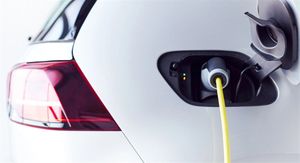
Munich, Germany – September 30, 2025 – In a pivotal moment for wireless communication, Huawei (SHE: 002502), in collaboration with the Institute of Electrical and Electronics Engineers (IEEE) and other industry pioneers, today released the "Wi-Fi 7 Advanced Technology White Paper for Europe." at the Huawei Network Summit 2025. This landmark document outlines a comprehensive strategic vision and technological roadmap for the future of wireless connectivity across the European continent, emphasizing the transformative capabilities of Wi-Fi 7 Advanced. The release signifies a concerted effort to accelerate enterprise digital transformation and bridge the technological gap in next-generation wireless standards within Europe.
The white paper's immediate implications are profound, promising to introduce groundbreaking innovations that will redefine campus networks, enable ultra-broadband 10 Gbps connectivity, and foster intelligent spaces through integrated communication and sensing. With a strong focus on enhanced security and superior connectivity features, this initiative is set to significantly impact user experience, bolster data protection, and drive digital productivity across various industries in Europe, setting a new benchmark for wireless performance and intelligence.
Charting the Course for Next-Generation Connectivity
The release of the Wi-Fi 7 Advanced Technology White Paper for Europe on September 30, 2025, during the Huawei Network Summit in Munich, marks a significant step in the global push towards advanced wireless standards. This collaborative effort, spearheaded by Huawei and supported by the IEEE and other unnamed industry pioneers, provides a detailed blueprint for the deployment and adoption of Wi-Fi 7 Advanced in the region. Dr. Edward Au, the IEEE 802.11be (Wi-Fi 7) Technical Editor, played a crucial role, underscoring the IEEE's foundational involvement in the technology, while Shawn Zhao, President of the Campus Network Domain, Huawei's Data Communication Product Line, highlighted Huawei's commitment to innovation and collaboration.
The document meticulously details key advancements designed to revolutionize wireless networks. Among these are 80 MHz continuous multi-AP networking, which promises to double single-user data rates through Intelligent Coordinated Scheduling and Spatial Reuse (iCSSR). The paper also introduces integrated Wi-Fi communication and sensing, a feature poised to enable intelligent upgrades across various sectors, from optimizing energy consumption through human presence detection to 24/7 vital sign monitoring using millimeter-wave (mmWave) technology. Furthermore, the white paper emphasizes a robust, full-scope security framework, including innovative Wi-Fi Shield technology that utilizes AI-powered signal scrambling to prevent critical data leakage, and Wi-Fi Channel State Information (CSI) sensing for precise intrusion detection.
A primary focus of the white paper is the transformation of campus networks, envisioning sophisticated environments where Access Points (APs) seamlessly integrate communication, sensing, and the Internet of Things (IoT). This integration is expected to significantly enhance user experience, bolster security, and improve digital productivity, leading to more intelligent and efficient campus environments across Europe. Huawei's Xinghe AI Campus, powered by Wi-Fi 7 Advanced, is projected to deliver ultra-broadband 10 Gbps connectivity, aiming to overcome existing office efficiency bottlenecks and set new benchmarks for communication speed. This proactive engagement from Huawei and its partners aims to guide the understanding, development, and deployment of Wi-Fi 7 Advanced, particularly in a European market that has historically lagged in Wi-Fi 7 patent ownership.
Market Movers: Winners and Losers in the Wi-Fi 7 Era
The advent of Wi-Fi 7 Advanced, as championed by Huawei (SHE: 002502) and the IEEE, is set to create significant shifts within the technology and financial markets. Companies poised to gain substantially include those at the forefront of semiconductor manufacturing and networking equipment. Qualcomm (NASDAQ: QCOM), a leader in Wi-Fi chipsets, especially for mobile and networking infrastructure, stands to be a major beneficiary as demand for Wi-Fi 7 compatible hardware escalates. Similarly, Broadcom (NASDAQ: AVGO), with its strong presence in enterprise networking and Wi-Fi solutions, will likely see increased adoption of its advanced chipsets. Other semiconductor players like MediaTek (TPE: 2454) and Intel (NASDAQ: INTC), which are actively developing Wi-Fi 7 solutions for various devices and PCs, are also well-positioned to capitalize on this transition.
Networking equipment manufacturers will also experience a surge in demand. Beyond Huawei, companies like Cisco Systems (NASDAQ: CSCO), Arista Networks (NYSE: ANET), and Hewlett Packard Enterprise (NYSE: HPE) will be critical in providing the access points, routers, and infrastructure necessary for Wi-Fi 7 Advanced deployments. Their ability to integrate the new standards and offer compelling solutions for enterprise and campus environments will determine their market share. Device manufacturers, from smartphone makers like Samsung Electronics (KRX: 005930) and Xiaomi (HKG: 1810) to laptop and IoT device producers, will also benefit as they upgrade their product lines to support the enhanced capabilities of Wi-Fi 7 Advanced, driving a new upgrade cycle for consumers and businesses.
Conversely, companies that fail to adapt quickly to the new Wi-Fi 7 Advanced standards may face challenges. Legacy networking equipment providers or smaller chipset manufacturers that cannot invest in the research and development required for this advanced technology could see their market share erode. Furthermore, service providers and enterprises that are slow to upgrade their infrastructure might find themselves at a competitive disadvantage, unable to offer the high-speed, low-latency, and secure connectivity that Wi-Fi 7 Advanced promises. The European market's current lag in Wi-Fi 7 patent ownership, as highlighted by a May 2025 report, suggests that some local players might need to accelerate their innovation or risk falling further behind global leaders.
Broader Implications and Industry Transformation
The release of the Wi-Fi 7 Advanced Technology White Paper for Europe by Huawei (SHE: 002502) and the IEEE is more than just a technological announcement; it's a strategic move that fits into a broader industry trend towards ultra-reliable, high-bandwidth wireless communication. This event accelerates the convergence of wireless communication with advanced applications such as the Internet of Things (IoT), Augmented Reality/Virtual Reality (AR/VR), and smart city initiatives. The emphasis on integrated communication and sensing capabilities within Wi-Fi 7 Advanced is particularly significant, as it positions Wi-Fi as a foundational technology not just for data transfer, but also for environmental awareness and intelligent automation, crucial for the next wave of digital transformation.
The ripple effects of this development are expected to be far-reaching, impacting competitors and partners alike. For competitors, it intensifies the race to innovate and deploy Wi-Fi 7 solutions, compelling them to invest heavily in R&D or risk losing market relevance. For partners, especially within Europe, it presents significant opportunities for collaboration in developing and implementing new applications and services that leverage Wi-Fi 7 Advanced's capabilities. This includes system integrators, software developers, and specialized IoT solution providers. The move also carries potential regulatory and policy implications, as European authorities may need to consider spectrum allocation, cybersecurity frameworks, and data privacy regulations to accommodate the advanced features and expanded use cases of Wi-Fi 7.
Historically, the evolution of Wi-Fi standards has consistently driven innovation and market growth. From Wi-Fi 4 (802.11n) enabling widespread wireless broadband to Wi-Fi 6 (802.11ax) enhancing performance in dense environments, each iteration has opened new possibilities. Wi-Fi 7 Advanced, with its focus on 10 Gbps speeds, ultra-low latency, and integrated intelligence, is comparable to the leap seen with 5G in cellular networks, promising to unlock applications that are currently limited by existing wireless infrastructure. This white paper serves as a clarion call for Europe to embrace this next generation, potentially helping to close the gap in wireless innovation highlighted by the region's current deficit in Wi-Fi 7 Standard-Essential Patents (SEPs).
The Road Ahead: Short-Term Adoption and Long-Term Evolution
The immediate aftermath of the Wi-Fi 7 Advanced Technology White Paper's release will likely see a concentrated effort from Huawei (SHE: 002502), the IEEE, and their partners to evangelize the new standard across Europe. Short-term possibilities include increased industry workshops, pilot programs, and collaborative ventures aimed at demonstrating the practical benefits of Wi-Fi 7 Advanced in enterprise and campus environments. We can expect to see early adopters, particularly in tech-forward industries and academic institutions, begin to upgrade their infrastructure to leverage the 10 Gbps connectivity and advanced sensing capabilities. This initial phase will be crucial for gathering real-world performance data and refining deployment strategies.
In the long term, Wi-Fi 7 Advanced is poised to become the cornerstone of next-generation wireless networks, enabling a fully integrated digital ecosystem. This will necessitate strategic pivots for many organizations, from network architects designing intelligent campus solutions to device manufacturers integrating Wi-Fi 7 Advanced into their product roadmaps. Market opportunities will emerge in various sectors, including smart manufacturing, healthcare (with enhanced vital sign monitoring), augmented reality (AR) for industrial and consumer applications, and advanced smart home systems. Challenges will include the significant capital expenditure required for infrastructure upgrades, ensuring interoperability between different vendors' Wi-Fi 7 Advanced solutions, and addressing potential cybersecurity risks associated with increasingly intelligent and interconnected networks.
Potential scenarios and outcomes range from a rapid and widespread adoption across Europe, leading to a significant boost in digital productivity and innovation, to a more gradual rollout constrained by economic factors or regulatory hurdles. A key factor will be the speed at which European regulatory bodies allocate necessary spectrum and establish clear guidelines for the advanced features of Wi-Fi 7. Ultimately, the success of this initiative will hinge on continued collaboration between industry, academia, and government to foster an environment conducive to technological advancement and widespread deployment.
A New Era for European Wireless: Key Takeaways and Investor Outlook
The release of the Wi-Fi 7 Advanced Technology White Paper for Europe marks a definitive turning point for wireless communication in the region. The key takeaway is a clear and ambitious roadmap for ultra-high-speed, intelligent, and secure wireless networks, driven by the collaborative efforts of Huawei (SHE: 002502), the IEEE, and industry pioneers. This initiative aims to not only accelerate enterprise digital transformation but also position Europe at the forefront of next-generation Wi-Fi innovation, addressing its current lag in Wi-Fi 7 patent ownership. The emphasis on 10 Gbps connectivity, integrated communication and sensing, and robust security features will fundamentally reshape how businesses and consumers interact with their digital environments.
Moving forward, the market is set for a significant upgrade cycle in networking infrastructure and client devices. This will create substantial opportunities for semiconductor manufacturers like Qualcomm (NASDAQ: QCOM) and Broadcom (NASDAQ: AVGO), as well as networking equipment providers such as Cisco Systems (NASDAQ: CSCO) and Arista Networks (NYSE: ANET). Investors should watch for companies demonstrating strong R&D capabilities in Wi-Fi 7 Advanced chipsets and solutions, and those with established distribution channels in the European market. The ability of these companies to form strategic partnerships and provide comprehensive ecosystem solutions will be crucial for capturing market share.
In the coming months, investors should closely monitor the pace of Wi-Fi 7 Advanced adoption in Europe, paying attention to announcements of major enterprise deployments and new product releases from key players. Regulatory developments concerning spectrum allocation and cybersecurity will also be critical indicators. The long-term impact will be a more connected, intelligent, and efficient Europe, but the short-to-medium term will be characterized by intense competition and rapid innovation in the wireless technology sector. This white paper is not just a technical document; it is a catalyst for a new wave of investment and growth in the global wireless market.
This content is intended for informational purposes only and is not financial advice





